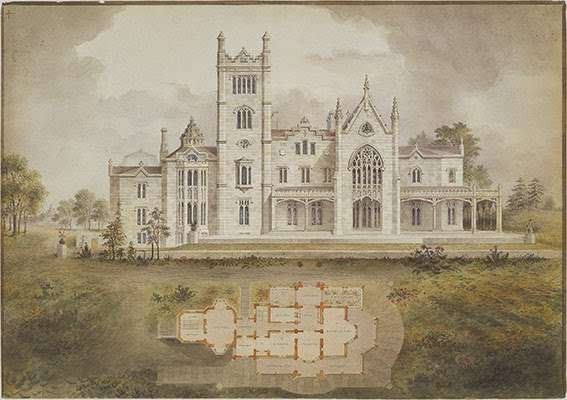The Archival Legacy of Alexander Jackson Davis


 The archival legacy of Alexander Jackson Davis (1803-1892) constitutes the largest surviving American architectural archive of the pre-Civil War era.
The archival legacy of Alexander Jackson Davis (1803-1892) constitutes the largest surviving American architectural archive of the pre-Civil War era.
The 1993 exhibition and publication at the Metropolitan Museum of Art established the scope of Davis’s intellectual and artistic life, a monumental undertaking given the dispersal of his archive to four major New York collections and smaller ones as well.
Descriptions of many collections can be found online, but their dispersal has made a full investigation difficult. We live in an age of great interest in the archives of star architects and now it is Davis’s turn.
In addition to his magnificent watercolors and drawings of his projects, Davis left detailed diaries of his life as an architect and his “whereabouts” in the world.
The diaries provide a look into the details of his architectural practice, his everyday life, how he traveled, the corpus of his prints of architecture, his family relations, the contents of his private library, and architectural education.
The internet now enables researchers to identify and gather information about Davis, his clients and other people in his circle, places, and events quickly.
The New York Preservation Archive Project will host a free public lecture with archivist Janet Parks, “Re-Uniting the Archival Legacy of Alexander Jackson Davis in the Digital World,” from 6 until 8 pm on September 25, 2025 at Grace Church in New York City.
This talk will relate the history of Davis’s archive and library of architectural books during his lifetime and its eventual sale or placement in institutional collections.
Recently, the Avery Library at Columbia University acquired a volume that Davis owned, annotated, and drew in. In the 30 years since the Met exhibition established Davis’s built work, further work has been hindered by the archive’s dispersal by his children in the years following their father’s death.
They carefully placed and sold individual items and large groups of material over several decades. Library provenance records help track the remainder of the archive sold after his children died in the 1930s. Archival records show the efforts by prominent historians and institutions to preserve Davis’s legacy.
The long-term goal of Parks’ research is to re-unite the archive online as a whole, virtually in images and as an integrated description of its contents, to open up a closer look at Davis as an architect and an individual in 19th century New York.
Doors open for the September 25th event at 6 pm; the lecture begins at 6:30 pm. The church, located at 802 Broadway, has a wheelchair-accessible entrance. Please see staff for assistance.
Read more about architecture in New York State.
Illustration: Andrew Jackson Davis’ Lyndhurst in Tarrytown, NY (Metropolitan Museum of Art).
Source link




